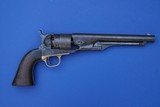 |
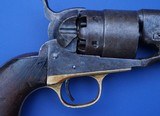 |
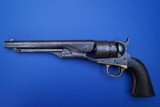 |
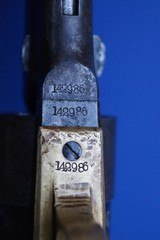 |
 |
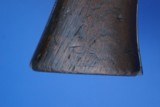 |
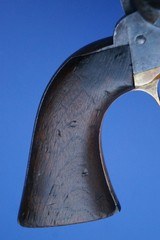 |
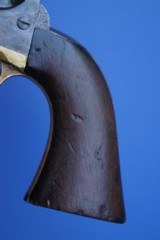 |
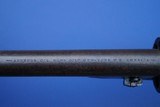 |
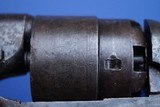 |
 |
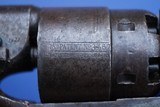 |
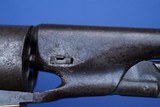 |
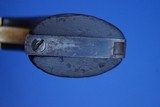 |
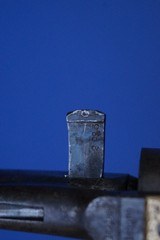 |
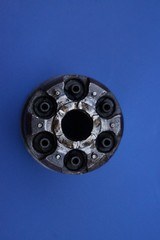 |
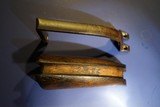 |
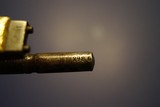 |
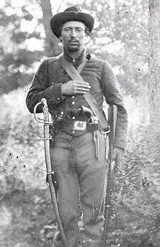 |
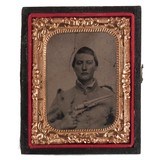 |
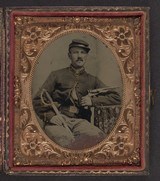 |
 |
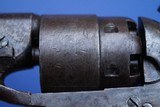 |

Colt 1860 Army Revolver w/ Orig. Finish AND Battlefield Use
Guns International #: 101143731 Seller's Inventory #: 2046
Category: Colt Revolvers - Antique Percussion - Civil War Revolvers
Seller's Information
When emailing or calling sellers direct, please mention that you saw their listing on GunsInternational.com
Seller: Brent Wilburn
Company: Antique Arms, Inc.
Member Since: 11/19/15
First Name: Brent
Last Name: Wilburn
State: Georgia
Zip: 30052
Country: United States
Phone: (678) 471-1432
Phone2: (678) 471-1432
Number of Active Listings: 0
Total Number of Listings: 599
Seller: Private Seller
Return Policy: 3 day inspection and return policy on used guns.
Payment Types Accepted: Money Order, Certified Check
Description:
This is an interesting Colt 1860 Army as it's likely among the last ones delivered to the US Army in late 1863 before the Colt factory was lost by fire in early 1864. In spite of its age, it shares an unusual combination of original condition and battlefield use. It still shows quite a bit of original blued finish on the barrel and case colors on the frame but plenty of nicks and scratches as well. The serial number is in the 142,986 range which is quite late for a martial 1860. We acquired this revolver at a relic show from a man who looked to be in his 70's. He told us that he'd owned this revolver for over forty years and that it had come from an old Chattanooga collection that he'd seen when he was a boy. Some years later, the collection was sold off and the owner eventually purchased it from the next caretaker's estate. That said, while we don't have specific Civil War history, I think we can suffice to say that this Colt spent much of its life in East Tennessee. Assuming it was issued to a western unit in late 1863 or 1864, SN# 142,000 would have been manufactured a little too late to have seen Chickamauga. There is a slight chance it could have seen the Battle of Missionary Ridge in late 1863, but more than likely played a role in Sherman's Atlanta Campaign which started in May of 1864, Battles of Franklin and Nashville in late 1864, as Hoods defeated Army streamed back into TN, or action in Alabama as late as 1865. On top of that, there were pro-Union units being formed in eastern TN at the end of the war to fight Johnston's army in North Carolina. We'll likely never know the specifics, but it certainly shows evidence of having seen some action...the tap markings around the barrel wedge, the heavy blows to the wedge as if someone's life depended on it. You can also see that once he removed the wedge, he used the loading lever to pivot the barrel off the frame for reloading/or replacing the cylinder. This left rammer marks on the face of the cylinder...and boy was he probably scared and in a hurry. There are lots of little nicks and abrasions,but to have original blue, case colors, nice markings intact tells us this was heavily used but only for a relatively short period of time. Based on its late production, this could only been in the field the last 6-18 months of the Civil War.
The serial numbers are matching on the frame, barrel, trigger guard, wedge, backstrap, arbor pin, and grips (inked) but the cylinder is strangely mismatched. You would never guess judging by overall appearance as the wear and condition are incredibly consistent to one another. The cylinder has been on this revolver for forever! It even has the same sub-inspectors initial "D" that the barrel has. In fact, the barrel AND cylinder are both marked with two D's..."D" and "D" on the cylinder and "D and D" on the barrel. Why were these two parts (which aren't matching in serial number) inspected not once but twice by the same inspector? The four digits on the cylinder are 3567. My guess is this would have had to come off of serial number 143,567...just under 600 numbers away from this revolver 142,986. You know what...as strange as this may sound, I think this cylinder may be original to this gun...in other words it left the factory this way. Why? Well, for a start, it shares the same sub-inspector initials, the same nicks, has fairly decent cylinder scene, a little bit of blue in back of the rebate, and has ALL SIX SAFETY PINS intact! This is about what you'd expect to find on a revolver that still has about 25% original blue left on the barrel and at least 1/3 of the original case colors on the frame. While not impossible, it would be difficult to match a cylinder up to a Colt with this unusual combination of wear and condition. Then add the "D" inspector initials with double inspections...quite unlikely. Furthermore, it has an additional set of the same sub-inspectors' initial "P" inside the frame and the back of the cylinder. So those two sub-inspectors are the same as well. To put this into perspective, The US gov't had approximately ten civilian sub-inspectors working inside the Colt plant...many coming and going throughout the war for jobs in other plants...so what are the chances, these parts would share the same ones on a mismatched cylinder? According to an older article in Springfield Researchby Charles Pate (Pate just came out with his long-awaited book on the Model 1860 Army by Mowbray Publishing) when double inspector initials are found on a barrel and cylinder, they're indicative of some type of rework. While it is far easier to suggest the old "camp-fire" swap while two soldiers from the same regiment were cleaning their revolvers one night, or that one soldier had multiple revolvers (which also was quite common), I'd like to put forth another possibility. Given the same inspector, "D" who has double initials on both the cylinder (rework) and barrel (rework), the same subinspector "P" on cylinder and barrel, AND the consistency in condition and wear, could this be a revolver that didn't fully pass inspection, was corrected (by installing a better cylinder off another rejected 1860), and re-inspected in order to fully pass. Over the past ten years, we have run across two Remington Model 1863 New Army revolvers in high condition that suggests the same practice...reconstituting arms with a rejected component into one that would pass inspection. As the parts were completely interchangeable thanks to industrial revolution era tooling known as "The American System" of manufacture, the Army could have cared less about matching serial numbers. That said, what did Colt do with all the rejected parts from the military...which were often very minor blemishes and flaws? That's right, at least some were made into Civilian Colt 1860's during the Civil War. If you ever see a Colt 1860 with a double numbered serial number...one on the line that is mismatched to the gun followed by another matching number right beneath, it is highly likely that is a cylinder that was rejected by the military.
From there, the grips are cartouched "JT" on the right side. This was Principal Sub-Inspector "James Taylor's" initials. The left grip cartouche appears to be JSD which would be "James S. Duston". Both Taylor and Dustin inspected Colt Model 1860's up into the 143,000 serial range for the military. I believe these were among the very last 1860's shipped to the military during the Civil War before the Colt plant was lost. The backstrap, trigger guard, and base of the grip are marked "H". Nice Colt barrel address.
Overall Condition grades to NRA Antique Very Good with 25% thinning original blue on the barrel, 35% dull faded case colors across most of the frame mixing in with a brown patina, good traces of case colors on the loading lever, and hammer. 25% Original blue on the backstrap...mainly behind the hammer and along the base of the grip. The grips are solid with no cracks, repairs, or noteworthy chips. Nice wood to metal fit with two very good and legible inspector cartouches and one subinspector initial along the base. Internally, there are bright case colors under the cylinder on the frame, inside the backstrap, and quite a bit on the internal surfaces of the wedge. The action is in Very Good condition. Bore is Fine overall, mostly bright and shiny with strong rifling throughout. There is a half-ring of pitting and corrosion about 2-1/2 inches from the cylinder. This is simply oxidation from either a mud dobber's nest or black powder. It is not a bulge as the outside of the barrel is perfectly even and smooth. Original front sights. Cylinder shows about 75-80% of its naval engagement scene with some dings a few light scattered pits. You can still read some of the "Engaged 1843" date around the circumference and the tiny "Patented Sept. 10th 1850" date under the serial number is quite sharp. The cylinder still has 5-10% of its original blue remaining in the recessed area known at the rebate. The rear lugs retain all six safety pins for resting the hammer. This is quite hard to find on a military issued Colt. If you're looking for a nice Colt 1860 Army for your Civil War collection but don't want to spend a lot of money, this one is being priced accordingly due to the mismatched cylinder. I know most would write this off as an internal regimental swap, but because of the double inspection marks, I think a very good case can be made that it left the factory this way! It has a great look to it and not often we find one with this much original finish on a Colt with actual wartime usage.
SOLD
Antique: Yes
Manufacturer: Colt
Model: 1860
Caliber Info: 44